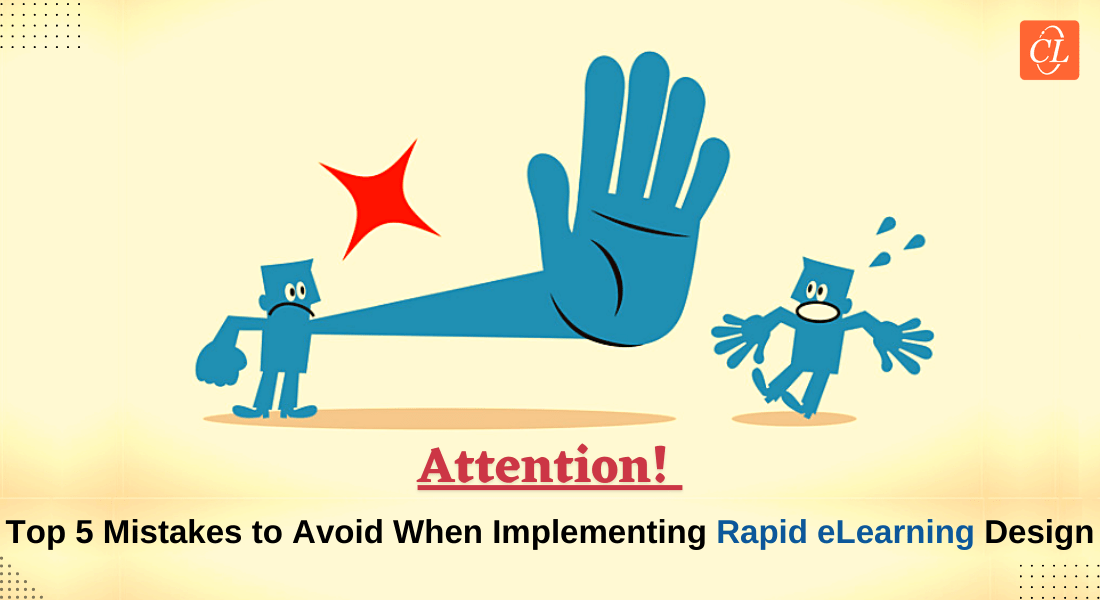Must-Follow Elements and Principles for Fail-Proof eLearning Solutions for Corporate Training

Learning can be defined as a “transformative process of consuming information that changes what we know and builds on what we do. Learning is based on input, processing, and reflection; learning is what changes us.”
– Tony Bingham & Marcia Conner
Like breathing, learning too is a process that starts when we take birth and continues throughout. While there is unorganized learning at every step of life, organized learning is something that we acquire at institutions like schools, colleges, and even at organizations where we work.
This article focuses on organizational learning and what makes it effective.
Want to Make Your Corporate Training More Effective?
Make sure that your eLearning course includes these:
- Elements of Effective Learning
- Principles of Adult Learning
- Engaging eLearning Formats
Want to Make Your Corporate Training More Effective?
Make sure that your eLearning course includes these:
- Elements of Effective Learning
- Principles of Adult Learning
- Engaging eLearning Formats
Organizational learning can be defined as the process where an organization focuses on the creation, and retention of knowledge. This is a key strategy to strengthen the organization as a whole.
Corporate training is among the most important aspects of organizational learning. Corporate training is an activity that “provides learners with the knowledge and skills required to perform their job roles and responsibilities at a high level”.
Corporate training approaches learning by categorizing it under three heads:
- Knowledge: Information that is required to perform a task
- Skills: The application of knowledge
- Attitudes: The way we look at things
Whatever category it falls into, it is important that the learning delivered through corporate training is effective.
Elements of eLearning
There are a few time-tested elements and principles of effective eLearning. Following these elements helps create fail-proof eLearning solutions.
1. Motivation
As the saying goes, ‘You can lead a horse to water but you can’t make him drink’, you can provide someone with all the resources to learn but they can learn it only when they have motivation. Therefore, motivation to learn something new, acquire a new skill, or upgrade are foundational for learning.
2. Stimulus
Strong stimulus is what triggers responses. In the context of learning, a strong stimulus – the learning material – makes learning more effective and motivates the learner to keep learning.
3. Response
Is the learning provided helpful to the learner? Is the learner responding to it? If yes, how is the response? The answers to these questions depend on the stimulus provided. A strong stimulus is important to drive an effective response.
Wondering how to start eLearning in your organization? Get insights here!
4. Practice and reinforcement
Learning becomes impactful when the learners are provided with opportunities to practice and reinforce the knowledge gained. For instance, the use of quizzes, how-to or what-to-do questions during a session will give them a moment to apply their learning. This way, there is also a greater chance for knowledge retention.
5: Reward
In children, learning is mostly a way to quench curiosity. However, it is much different for adults. Adults tend to spend time and effort learning something when there is a significant reward tied to it. For instance, they show eagerness to learn a new programming language to upgrade their skills as this increases their chances of a promotion.
So, the stronger the reward, the greater the motivation to learn and excel. Now that you know the elements of eLearning, let us take a look at the principles to be followed.
Principles of Adult Learning
Adult learning, which is called andragogy, is very different from children’s learning or pedagogy. According to John Locke’s theory of “tabula rasa”, children’s minds are like “blank slates” and they tend to learn everything that comes their way.
However, adults already have a lot of knowledge from their education and experience. So, a learning experience for them means building on the already existing knowledge. They tend to focus on ‘what will I get from the learning’. At the same time, they like to learn and gain knowledge in their way which is often ‘self-directing’. Studies have also put forward that adults are motivated to learn better when they get a reward from the learning experience.
It is interesting to note how these qualities of adult learning are in conjunction with the elements of effective learning.
Now we know the difference between children’s learning and adult learning. This difference has to be kept in mind when designing eLearning courses in mind. From the formats of the training sessions to the content used, the difference reflects everywhere.
Let us now move on to discover some of the widely used learning formats for adults which you can use in your corporate training.
Engaging eLearning Formats
1. Live Formats
This is the most common learning format wherein both the instructor as well as the learner are present at the same physical location, at the same time. Instructor-led training that happens within a classroom and on-the-job training are examples of this format.
2. Virtual Collaboration/Synchronous Learning
This type of learning, does not require the instructor and the learner to be at the same location. The learning can happen over a distance (for example, through video conferencing). However, it requires both the learner and the instructor to be present at the session at the same time.
Examples of this type of learning include live eLearning classes via tele or video conferencing, and e-mentoring via email or conferencing.
3. Virtual Collaboration/Asynchronous Learning
In this type of learning format the learners are given the liberty to learn on their own time. It doesn’t require the instructor or the learner to be present at the same time or the same location. The learners can take the learning sessions at their convenience via virtual mediums such as email, online communities, virtual dashboards, etc.
4. Self-Paced Learning
In this type of learning, the learners can consume the learning at their own time and pace. The learning is delivered through eLearning modules, online resources like eBooks, PPTs, PDFs, and online self-assessments.
5. Performance Support Systems (EPSS)
This format is quite popular among modern learners. It involves courses and sessions which the learners can access whenever they need them. Job aids, knowledge databases, and performance/ decision support tools are a few examples of this format.
Parting Thoughts
Learning is a key part of human life – learning is foundational for human growth and sustenance. And, as a part of corporate training, learning, especially eLearning, fosters all-rounded growth of the employees, and contributes to the growth of the organization. Considering this, an organization needs to ensure that there is continuous learning. This is also the reason why the organizational Learning and Development (L&D) industry is emphasizing on the adoption of eLearning.
Want to know more about eLearning and champion the discipline? This eBook will help you.



![eLearning Authoring Tools in Corporate Training [Top 5 Benefits + Examples]](https://blog.commlabindia.com/hubfs/Imported_Blog_Media/Top-5-benefits-of-using-eLearning-authoring-tools-min.png)

